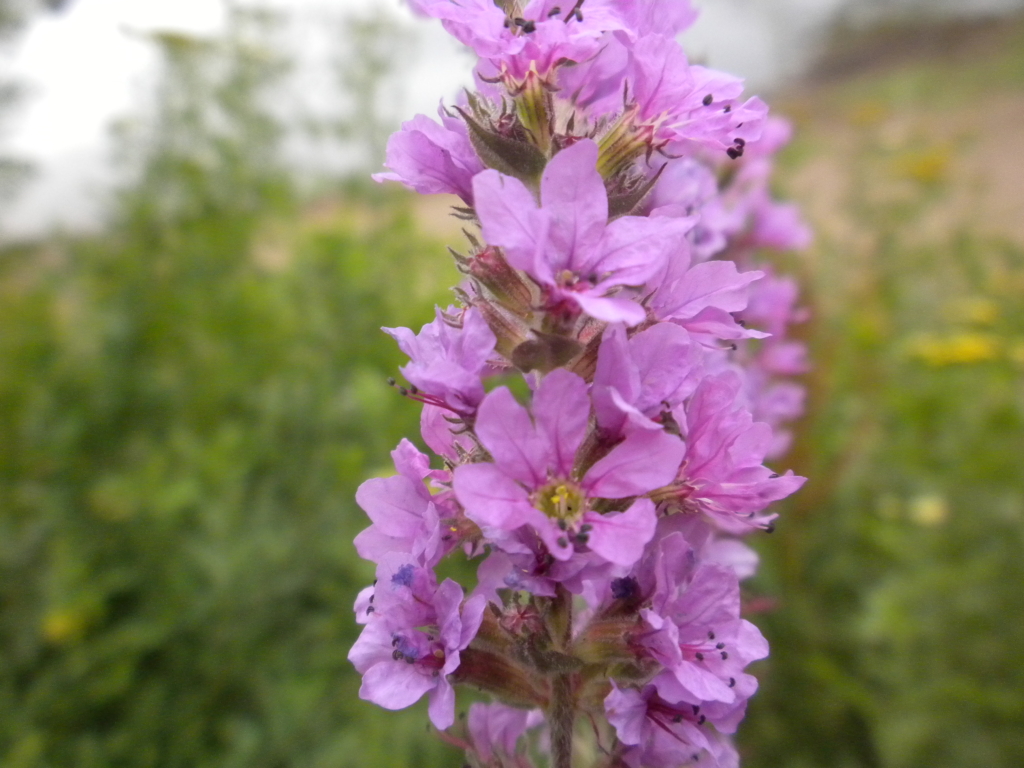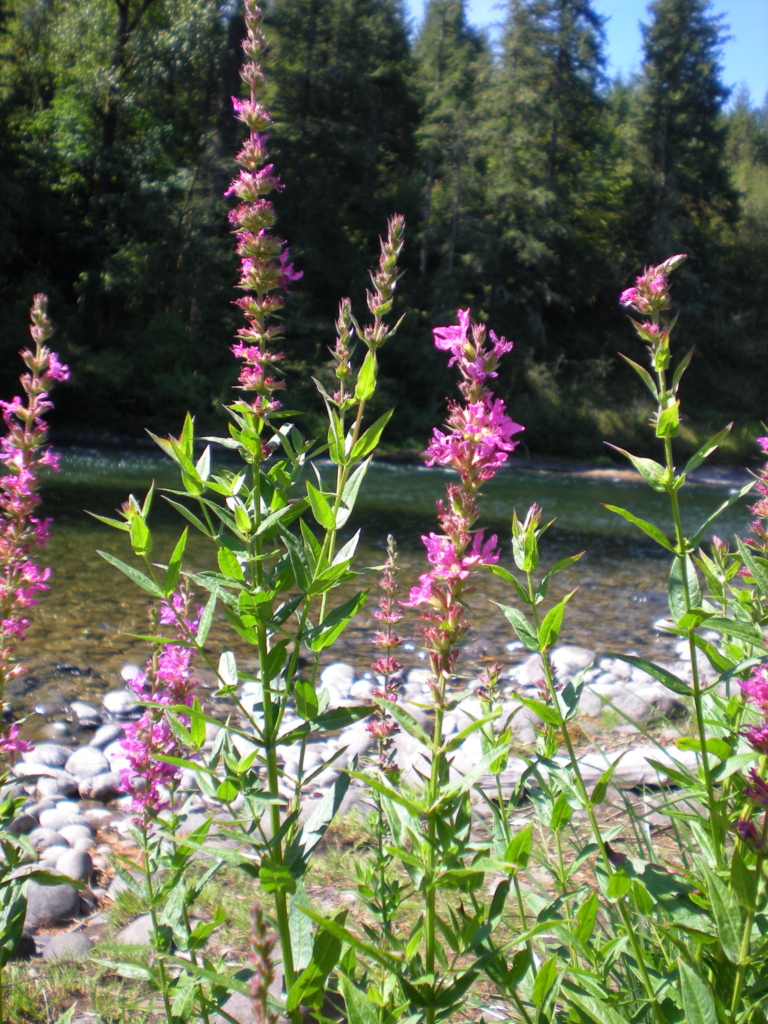Purple Loosestrife
Lythrum salicaria
Plant Description
A perennial with a woody crown and stiff, 4-sided stems. Leaves opposite or whorled, small magenta flowers with 5-7 petals on tall showy spikes.
Plant Details
| Life Forms | |
|---|---|
| Habitats | |
| ODA Listing | |
| Soil and Moisture Conditions | |
| Suggested Actions | |
| Shade Preference | |
| Mature Height | 6-10' |
| Distribution | Found throughout the Pacific Northwest, in California and northeastern US. |
| Control | Small infestations can be dug up being sure to remove roots, monitor and repeat as needed. |
| Disposal Methods | Plant parts can resprout. Seal in plastic bags and dispose in landfill. |
| Reproduction and Spread | Reproduces by seed and spreads by stem fragments. One plant can produce over 2 million seeds. |
| Introduced | Introduced to the east coast of the US in the 1800s from Eurasia as an ornamental and in ships' ballast. |
| Look Alikes | spirea, checkermallow, fireweed |
| Impact | Can quickly adapt to environmental changes and expand its range to replace native plants that waterfowl use for ground cover, food or nesting material. Provides no cover for nesting ducks (Timmerman 1992). Recreational hunting or trapping grounds are lost, decreasing the land value of operational Wetlands. |
| More Info |
© Marion Soil and Water Conservation District. All Rights Reserved.


